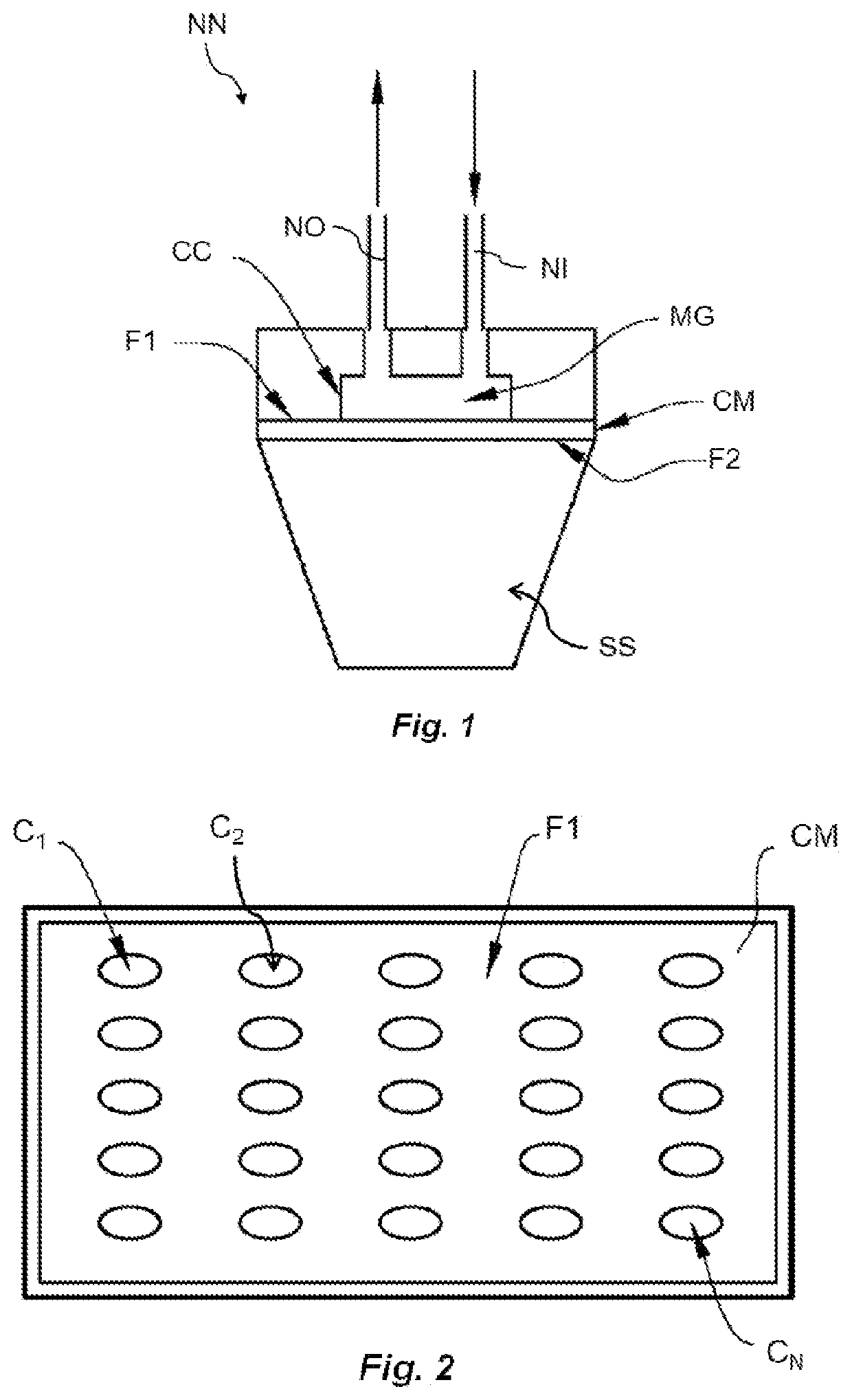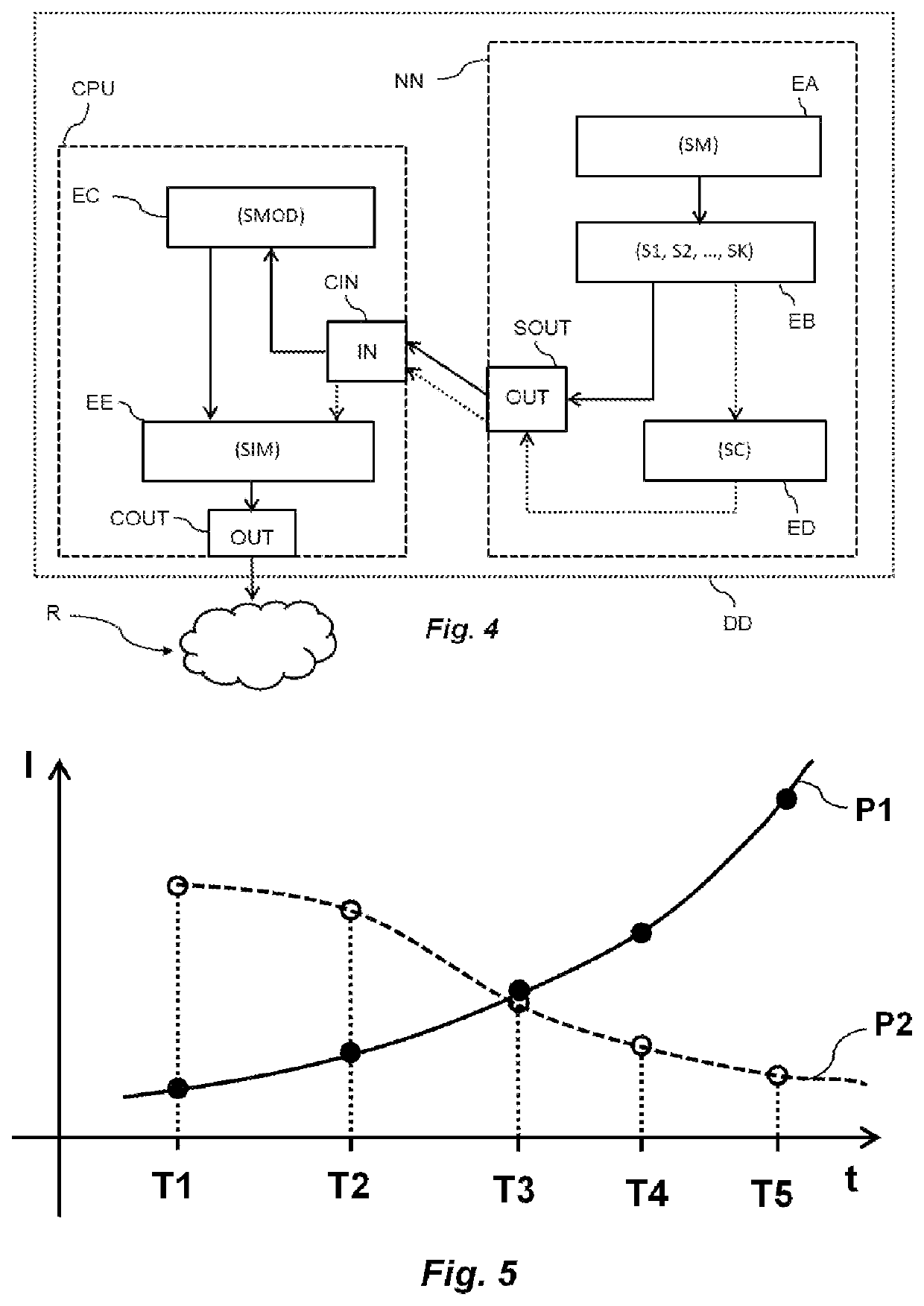Method for identifying an item by olfactory signature
a technology of olfactory signature and item, which is applied in the field of method for identifying an item by olfactory signature, can solve the problems of affecting the value of items, adversely affecting the reliability of their supply chain, and damage to items, so as to achieve the effect of eliminating more easily and maximizing the variance in an l-dimensional spa
- Summary
- Abstract
- Description
- Claims
- Application Information
AI Technical Summary
Benefits of technology
Problems solved by technology
Method used
Image
Examples
Embodiment Construction
[0075]Herein, an electronic nose is a physical device configured for acquiring an olfactory signature of a given object, such as a perishable item, from odors released by that item. An electronic nose typically comprises a plurality of sensors configured to recognize the presence of a target compound, for example a chemical or biological analyte, in a fluid such as a gas sample or liquid sample.
[0076]FIG. 1 shows an example of an electronic nose NN configured for implementing a method according to the invention. FIG. 2 is a view of a metal layer CM comprised in the electronic nose NN and its sensors C1, C2, . . . , CN, this metal layer being provided to facilitate detection, and in particular adsorption, of fluids in a mixture in contact with the layer CM.
[0077]In the example presented here, the electronic nose NN comprises a metal layer CM, preferably flat, and comprising for example gold. The layer CM of the electronic nose NN further comprises a number N of sensors C1, C2, . . . ...
PUM
 Login to View More
Login to View More Abstract
Description
Claims
Application Information
 Login to View More
Login to View More - R&D
- Intellectual Property
- Life Sciences
- Materials
- Tech Scout
- Unparalleled Data Quality
- Higher Quality Content
- 60% Fewer Hallucinations
Browse by: Latest US Patents, China's latest patents, Technical Efficacy Thesaurus, Application Domain, Technology Topic, Popular Technical Reports.
© 2025 PatSnap. All rights reserved.Legal|Privacy policy|Modern Slavery Act Transparency Statement|Sitemap|About US| Contact US: help@patsnap.com



